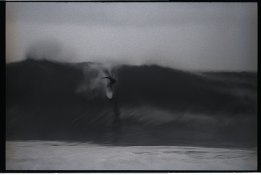Perhaps it was Nikon's original plan to replace G lenses with electronic aperture E lenses, but with their main focus on mirrorless these days I suspect most of the current range will never be updated. Incidentally, there's no problem with the old 'E' lenses made for the EM and FG, which are just standard entry-level manual focus lenses without the meter coupling prong.
The F5 is also incompatible with AF-P, which doesn't work with any film camera. The F5 can't do iTTL/CLS either (the F6 can).
I bought an F5 when they were reasonably cheap, more or less as a backup for the F100. It's a step up in solidity, the removable prism is nice, and it doesn't have the F100's weak point, that plastic back with its plastic catch. But it's the F100 I would reach for first. The F5 is as large and heavy as some medium format cameras. It doesn't seem so bad until you load those 8 Eneloops, which is another 240g, not far off half the weight of an F80 in batteries alone. Disposable lithiums would make this a bit more manageable. Of course, all this weight and bulk lets you burn a roll of film in under 5 seconds and spin an old screwdriver AF lens with the torque of a small sports car, but if you don't need to do these things in 2021 you are carrying around a lot of dead weight. I prefer the F100's more visible red focus indicators to the black ones on the F5. The latter also seem a tiny bit laggier in responding to the gamepad than they do on the F100, and I could do without the extra locks Nikon deemed necessary on the F5, including the one for the 'on' switch. Setting it to rewind feels like you are arming a nuclear missile or something.
For all that, the F5 is a classic camera, the template for every Nikon that followed, a big evolutionary step up from the F4, and with significant features the F6 lacks. It's just that when I don't need these things and I have to carry a camera around all day, the F5 tends not to be my first choice.




